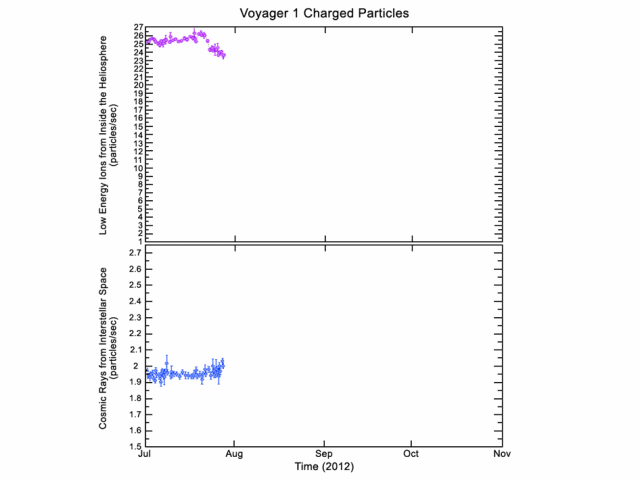This article is more than 1 year old
Voyager 1 arrives on ‘magnetic highway for charged particles’
Next exit: interstellar space
Venerable spacecraft Voyager 1 has arrived in the most distant part of space that can be considered part of the solar system.
NASA has labelled this region of space “a magnetic highway for charged particles” because it contains particles radiating out from the sun along with interstellar particles zipping into our neighbourhood. The particles in this region of space all travel in the same direction, a marked change from space closer to the sun where charged particles “bounced around in all directions, as if trapped on local roads inside the heliosphere.”
The findings in NASA’s announcement seem to have been compiled from several presentations at yesterday’s meeting of the American Geophysical Union (search on ‘Voyager’ from the link above to find the presentations).
This new region of space seems not to be entirely consistent, as NASA has stated “Voyager data from two onboard instruments that measure charged particles showed the spacecraft first entered this magnetic highway region on July 28, 2012.”
But the region then “ebbed away and flowed toward Voyager 1 several times,” with each re-entry to the region finding a stronger magnetic field although “the direction of the magnetic field lines did not change.”
Voyager 1 re-entered the region on August 25th, “and the environment has been stable since.”

The top graph (magenta) shows the prevalence of lower-energy charged particles that originate inside the heliosphere, which is the bubble of charged particles surrounding our sun. The bottom graph (blue) shows the prevalence of cosmic rays, which are higher-energycharged particles that originate from interstellar space. These data were obtained by Voyager 1's cosmic ray instrument.
Image credit: NASA/JPL-Caltech/GSFC
All of which sounds like roadworks on the magnetic highway, an event that might not take Voyager's overseers entirely by surprise, as they have said the presence of the magnetic highway was in no way expected. It is thought that when magnetic fields near the spacecraft change into another pattern it will signify its departure from our solar system.
That may happen today, in several months, or some time yesterday, as it takes 17 hours for a signal from Voyager 1 to reach Earth. ®
